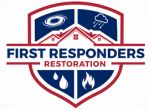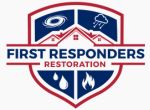Is Your Missouri Home at Risk? When to Schedule a Mold Inspection After Flooding
What is Mold and Why Does It Grow
Before we dive into when to schedule professional mold visual inspection services, let’s talk about what mold actually is and why it shows up in our homes especially after a flood. Mold is a type of fungus that loves moisture and feeds on organic materials. It thrives in places like basements, bathrooms, and other damp areas. You might not see it right away, but if there’s moisture and something for mold to feed on like wood, paper, or even dust—it can start to grow.
Here’s what mold needs to grow:
- Moisture: Leaky pipes, roof leaks, high humidity, and even steam from cooking or showering can provide the moisture mold needs.
- Organic Material: Mold feeds on materials like wood, drywall, cardboard, and even dust.
- Dark, Poorly Ventilated Spaces: Mold prefers dark places with little airflow—like behind walls, under sinks, or in closets.
- Warmth: Mold grows best in moderate to warm temperatures, which are common inside most homes.
Common places you might find mold include:
- Basements: They often have high humidity and occasional leaks.
- Bathrooms: Steam from showers makes these rooms prime mold spots.
- Kitchens: Steam from cooking and washing dishes adds moisture to the air.
- Areas with Leaks or Condensation: Think around windows, pipes, or anywhere you see water droplets forming.
- Crawlspaces: These are classic trouble areas—dark, damp, and poorly ventilated. Mold on wood in crawl space is common, and treating crawl space for mold quickly is essential.
If your home has these conditions especially after a flood, it’s a good idea to get ahead of the problem by scheduling a residential mold inspection early.
Flooding and Mold Go Hand-in-Hand — Here’s What You need to Know
Scheduling professional mold visual inspection services after a flood is one of the smartest things you can do to protect your home.
Flooding after heavy rain is a real headache and not just because of the mess. It often requires immediate water damage restoration services or even storm damage repair to prevent long-term issues. If you live in Missouri, you know how spring storms can lead to water damage fast. But what many folks don’t realize is that water can also lead to mold, and mold can cause serious problems for your home and your health.
If your home has had any flood or water damage, you might be wondering: When should I test for mold? This guide walks you through that question in plain, simple terms so you know when to act and how to keep your home safe.
Every Moisture Triggers to Watch After Flooding
While flooding is a major cause of mold, it’s not the only one. After a flood, it’s easy to focus only on the big damage and overlook smaller issues that can also lead to mold. But even little things like lingering humidity or unnoticed leaks can cause mold to sneak in and spread. Roofing and siding issues are common culprits that allow moisture to get in without you realizing. Here are 10 everyday sources of moisture you should keep an eye on, especially after water damage:
After a flood, you’re already on high alert. That’s why professional mold visual inspection services are crucial—they help spot the earliest signs of mold before it spreads. But don’t forget to check for these everyday moisture issues too, they can be just as risky. By being proactive and scheduling a residential mold testing when these signs show up, you can catch problems early and protect your home and health. If you’re unsure where to start, consider reaching out for professional mold inspection assistance, especially if sewage or black water was involved.
Why Mold Testing Is Important After a Flood
Mold Grows faster Than You Think
Mold can start growing just 24 to 48 hours after water hits your walls or floors. And it doesn’t need a lot; just a little moisture and a dark space. That’s why it’s so important to test early, even if everything looks okay on the surface.
Mold Can Be Harmful to Your Health
Mold releases tiny spores into the air. Breathing them in can lead to:
- Constant sneezing or coughing
- Itchy eyes or skin
- Breathing problems, especially if you have asthma or allergies
These are just a few symptoms of mold exposure in adults. Mold allergy symptoms and other health symptoms from mold can also worsen over time. Recognizing signs of mold exposure early such as household mold symptoms or mold in house symptoms. It can help you avoid more serious health risks.
If someone in your home starts feeling sick after a flood, mold might be the cause even if you can’t see it. In fact, symptoms of mold in basement exposure are often overlooked.
Mold Can Also Damage Your Property
Dealing with mold promptly isn’t just about protecting your health. It’s also about protecting your home. Mold can cause:
- Material Degradation: It eats away at wood, drywall, carpets, and insulation, weakening your home’s structure and leading to costly repairs.
- Reduced Property Value: Homes with mold problems are harder to sell or rent and can lose significant value.
- System Failures: Mold can spread into your HVAC system, causing it to perform poorly or even break down, while circulating mold spores throughout the house.
Catching mold early through professional mold visual inspection services, a professional mold inspection, or with certified mold inspectors can help you avoid these headaches and protect your investment.
Signs That It’s Time to Test for Mold
When Should You Schedule a Mold Inspection
As Soon As You Finish Drying Out
If you’re planning to hire someone for mold removal or cleanup, inspect first. It helps pinpoint the problem areas and makes cleanup more effective with the right mold remediation protocol.
After Cleanup Is Done
Once the remediation is complete, inspect again to make sure the mold is really gone. For larger properties or businesses, commercial water damage restoration services may be necessary to fully resolve moisture problems. It gives peace of mind and is useful for insurance, too.
Even If You Don’t See Mold, Inspections Can Still Help
You might not see mold, but it could still be there. Here are some signs to look out for:
- A musty smell that won’t go away
- Ongoing allergies or asthma flare-ups
- A history of water damage even if it was months ago
- Hidden spots like crawlspaces, attics, and behind appliances
These can all indicate mold spores symptoms or mold effects on body that aren’t immediately obvious. Learn more from trusted resources like the CDC’s Mold Guide, EPA Mold Cleanup, or Ready.gov Floods.
Take Action Before Mold Takes Hold
If your Missouri home has experienced flooding, don’t wait for visible mold or health symptoms to appear. A home inspector mold testing professional can help you catch issues early, protect your family’s health, and save money on major repairs down the road. Whether it’s a musty smell, a recent water leak, or just peace of mind you’re after, scheduling professional mold visual inspection services is a smart step.
Stay safe, stay dry, and remember—early inspections prevent expensive surprises.





Leave A Comment